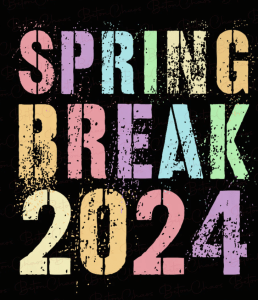
Category Archives: March 2024
March 25- March 29
Monday-Interpret dot plots
Tuesday-Compare dot plots
Wednesday- Compare Box Plots
Thursday-Unit 9 Review (Due Tuesday- Edney out)
Friday-No School Good Friday
Teks
7.6 Proportionality. The student applies mathematical process standards to use probability and statistics to describe or solve problems involving proportional relationships. 7.6(G) solve problems using data represented in bar graphs, dot plots, and circle graphs, including part‐to‐whole and part‐to‐part comparisons and equivalents. 7.12(A) compare two groups of numeric data using comparative dot plots or box plots by comparing their shapes, centers, and spreads, (B) use data from a random sample to make inferences about a population 7.12(C) compare two populations based on data in random samples from these populations, including informal comparative inferences about differences between the two populations
March 18-March 22
Monday-Population and Samples
Tuesday-Population Inferences
Wednesday-Interpret Bar Graphs
Thursday- Interpret Circle Graphs
Friday-Quiz: Data & Statistics
Teks
7.6 Proportionality. The student applies mathematical process standards to use probability and statistics to describe or solve problems involving proportional relationships. 7.6(G) solve problems using data represented in bar graphs, dot plots, and circle graphs, including part‐to‐whole and part‐to‐part comparisons and equivalents.7.12(B) use data from a random sample to make inferences about a population 7.12(C) compare two populations based on data in random samples from these populations, including informal comparative inferences about differences between the two populations

March 4- March 8
Monday-Independent Events
Tuesday-Dependent Events
Wednesday-Test Review
Thursday- Unit 8 Test
Friday-Catch up day/ Finish Test
Teks
(6) Proportionality. The student applies mathematical process standards to use probability and statistics to describe or solve problems involving proportional relationships. The student is expected to:(A) represent sample spaces for simple and compound events using lists and tree diagrams; (B) select and use different simulations to represent simple and compound events with and without technology; (C) make predictions and determine solutions using experimental data for simple and compound events; (D) make predictions and determine solutions using theoretical probability for simple and compound events; (I) determine experimental and theoretical probabilities related to simple and compound events using data and sample spaces. (H) solve problems using qualitative and quantitative predictions and comparisons from simple experiments
February 26 -March 1
Monday-Simple Probability and its Complement
Tuesday-Sample space
Wednesday-Half-day Experimental and theoretical probability
Thursday-Simulations and predictions
Friday-Quiz:Probability
Teks
(6) Proportionality. The student applies mathematical process standards to use probability and statistics to describe or solve problems involving proportional relationships. The student is expected to:(A) represent sample spaces for simple and compound events using lists and tree diagrams; (B) select and use different simulations to represent simple and compound events with and without technology; (C) make predictions and determine solutions using experimental data for simple and compound events; (D) make predictions and determine solutions using theoretical probability for simple and compound events; (I) determine experimental and theoretical probabilities related to simple and compound events using data and sample spaces.
